G-AP Implementation
Staff have told us that G-AP is fairly straightforward – they get it. What’s more challenging is successfully implementing G-AP in their local setting.
The way teams are set up, organised and work together can help or hinder the implementation of any new approach or intervention.
Planning for implementation increases the likelihood of success. Because every team is different, planning for implementation needs happen locally.
We know that you have invested a lot of time into G-AP training; we would like give you some ideas about how to support successful G-AP implementation in your team.
This will help your team embed G-AP in routine practice.
Thinking through G-AP implementation in your team

Think about how the rehabilitation process unfolds within your team and where goal setting fits within it. It may help to draw out a flow chart or diagram
Can you line up the stages of the G-AP process and consider the fit between this and your current process?
Think about who will implement what stage of G-AP and when? Working through the suggested key questions will help guide this process – download implementation question
Are there other questions that need to be considered to support G-AP implementation in your team?
Prompting use of G-AP in day to day practice
Changing how we usually do things can be tricky; new habits take time to become routine. Changing your goal setting practice is no exception.
Here are some ideas that could helpfully prompt you to deliver G-AP in your day to day practice.
You might use one or more of these ideas, or come up with your own idea.
Whatever works for you and / or your team is the way to go!

1.G-AP prompt card
- “Have I done everything I’m supposed to do?” “Have I forgotten anything?”
- Carry the prompt card with you – keep it in a handy place
- Check it when you see people to make sure you’ve covered everything that’s relevant to that session
Prompt Card Examples
2. Multi-disciplinary Team (MDT) meetings
- Embedding G-AP into your usual MDT patient meeting can be really helpful
- How do you currently structure your MDT meetings? Can you incorporate discussion of G-AP goals into your MDT meetings?
- It may be helpful to have a team member feedback on the first G-AP discussion with a person (“Where are you at; Where do you want to get to?”). This may help understand which team members are best placed to start seeing them.
3. Team meetings
It may be useful to have G-AP as an ongoing team meeting agenda item to discuss how G-AP implementation is going and troubleshoot any implementation issues arising.
4. G-AP Implementation group
- Local ‘champions’ can make a big difference to local G-AP implementation efforts
- You might want to consider setting up a G-AP implementation group in your team
- The group will include staff who will champion G-AP implementation
- If you have a small team, this might be one person or a whole team approach; if you have a large team, this might be two or three people from your team. This group can lead local (i) planning, (ii) monitoring and (iii) tailoring of G-AP implementation
- The group should meet regularly (every week or so) in the early stages of G-AP implementation; with less frequent meetings as G-AP becomes embedded within the team
- You can use the G-AP implementation Review and Planning template to guide G-AP implementation group meetings
Tailoring G-AP to individuals
G-AP is a person centred approach.
To achieve person centred care, you can tailor how G-AP is delivered to individual people, as long as you make sure that the key components of G-AP are adhered to.

Key components of G-AP that should be adhered to:
In partnership with the person…
- Provide them with accessible information about what the G-AP process is and how they can get involved
- Identify their needs, preferences & priorities
- Agree a specific goal(s)
- Agree an action plan(s) for each goal
- Consider a coping plan if barrier anticipated
- Measure confidence to complete the action plan
- Appraise outcome of each action plan & goal progress
- Give feedback & decide what to do next
- Provide person with an accessible copy of their goals, plan and progress
How you deliver these key components of G-AP is likely to differ from person to person.
Consider these examples …
| G-AP key components Staff work in partnership with people to … |
Tailoring options |
|---|---|
| Provide them with information about the G-AP process |
|
| Identify their needs, preferences & priorities |
|
| Agree a specific goal(s) |
|
| Provide the person with an accessible copy of their goals, plans and progress |
|

